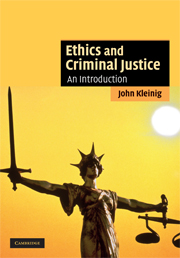Book contents
12 - Imprisonment and its alternatives
Published online by Cambridge University Press: 05 June 2012
Summary
The degree of civilization in a society is revealed by entering its prisons.
The prison is such a familiar institution that it is easy to forget how recently it has been socially normalized as – after fines – our most frequently used form of punishment. There has, of course, always been a need to detain those who are believed to pose an ongoing social threat or risk of flight pending legal judgment concerning their alleged offenses, and the imprisonment of debtors has also had a long history. But it was not until the late eighteenth century that imprisonment as punishment came into its own. Recent (2005) figures put the United States jail and prison population at over 2 million, an incarceration rate of 737 per 100,000 people, and the highest in the world (ahead of Russia, with 611). The rate for Canada was 107, for England and Wales it was 144, and for Australia it was 126. Within the United States, another 5 million are under some form of court supervision.
In the wake of exposés of prison brutality and neglect, it is also easy to forget that imprisonment (along with transportation) was originally advocated as a more humane Enlightenment alternative to corporal and public punishments. As attitudes toward the body changed, confinement – albeit often with incapacitating forced labor – became the favored penalty. Subsequently, mostly under the reformist influence of religious dissenters, the penitentiary was introduced as a vehicle for remorse and rehabilitation.
- Type
- Chapter
- Information
- Ethics and Criminal JusticeAn Introduction, pp. 212 - 232Publisher: Cambridge University PressPrint publication year: 2008



